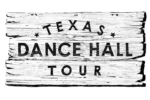

Peters-Hacienda Community Hall – October 27th
Address: 421 Trenckmann Rd. Sealy, Texas 77474
Phone: (979) 885-2354
Peters-Hacienda Community Hall is located in Peters, Austin County, where Texas Anglo settlement started in the 1820s with the founding of Stephen F. Austin’s first colony. German immigration to the area began shortly after the arrival of Friedrich Ernst in 1831. Ernst sent letters back to Germany, where his descriptions of the area were printed in newspapers and attracted other Germans to move to Texas. These immigrants established numerous fraternal associations devoted to literature, singing, marksmanship, agriculture, gymnastics, and mutual aid.
In the 1870s the county received its first railroad service when the Gulf, Colorado, and Santa Fe Railway extended its Galveston–Brenham main line through Wallis, Sealy, and Bellville. In the 1880s the same company built a branch line from Sealy to Eagle Lake through southwestern Austin County. Peters, a German community named for Albert Peters, an early resident, is situated on State Highway 36. During the community’s early history, it had a post office established in 1883, stores, cotton gins, a church, a hospital, and two schools, Peters School and Hacienda School. These places no longer exist, and the post office was discontinued in the mid-1940s.
Peters Hall was built for the Peters–Hacienda Schuetzenverein (Shooting Club), an association organized in 1897. The Schuetzenverein was a traditional sportsman’s club that German immigrants brought to Texas. Such societies date back to medieval Europe, where contests such as jousting and archery were held to keep everyone’s skills honed, should the need for combat arise. Later these contests became more of a social activity,with shooting competitions, food, and other activities, followed by a dance at night. In 1943 the hall’s name was changed to Austin County Gun Club. In 1995 the hall was renamed Peters–Hacienda Community Hall.
The first structure associated with the Schuetzenverein was a dance platform in the Huff family pasture (1898–99), north of Highway 36 and near present Farm Road 331. In 1900 the Seigart family donated a plot of land to the organization at the corner of Peters–San Felipe and Trenckmann roads. At this site members of the organization built an eight- sided frame dance hall. The hall was designed with a center pole to support the shingled hip roof, a spacious floor for dancing, and a cupola to provide ventilation and air circulation in the crowded hall. Glass-paned windows let in light and air, and benches along the walls provided a place to rest or to watch the dancers.
Since its original construction, many changes have been made to the hall. In 1910 a stage with a roll-up curtain was built. Before this, bands had performed around the center pole. After the stage was constructed, the center pole was boxed in. In 1940 Houston Lighting and Power brought electricity to the area, making it possible to use an electric pump to provide water for inside restrooms. In 1958 a bar was built onto the hall, and in 1965 a butane system for heating was installed. In 1975 a kitchen, including a stove, refrigerator, and water heater, was added. In June 1977, three bays of the hall were enlarged by eighteen feet, providing space for tables and chairs and leaving the original dance floor open. In March 2001, a storm caused the top of the tree between the food booth and bar to fall onto the roof, which was repaired. The hall remained without air-conditioning.
Although Peters Hall was built for shooting competitions, dancing eventually became its main use. Dancing was an important social event for German residents, and often entire families would attend. In the early 1900s, ladies used swatches of their new calico dresses as tickets. At these early dances only men paid admission, but later both dancers and spectators were charged. Dances soon became a regular event held at the hall on the second Saturday of each month. One type of dance was the masquerade dance, at which prizes were awarded in such categories as most beautiful, most comical, and best couple. Also popular were the Christmas dances, in which Santa would make an appearance, and New Year’s Eve dances. During the 1970s, locals organized a dance club, in which members paid a yearly rate and could attend any or all dances during the year. Bands that played for these dances included the Kreneks, Gaylen Ackley, the Countrymen, and the Sounds of Country. Dances were also held for the younger people of the community with music provided by the Emotions and Texas Pride.
An early event held at the hall was the May Fest, which included a parade, crowning of aking and queen, a barbecue, and dance. Later, an annual barbecue and dance were held on the second Sunday in July. This major fundraiser was moved to Mother’s Day in 1963 and featured such bands as the Country Playboys and Jimmy Heap and the Melody Masters. In the early 2000s this annual celebration, the largest fundraiser for the organization, consisted of a raffle, cakewalk, auction, and barbecue dinner. Music was provided outside during the afternoon, and after the auction a free dance was held inside the hall. The hall survived on the money it received from hall rentals and from its three major fundraisers—the Sweethearts chili cook-off in February, the Mother’s Day celebration in May, and Funday Sunday in September.